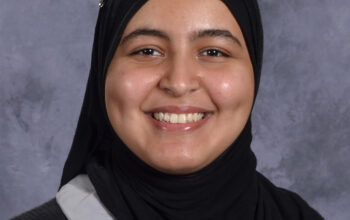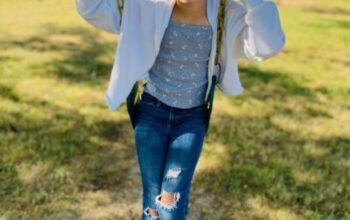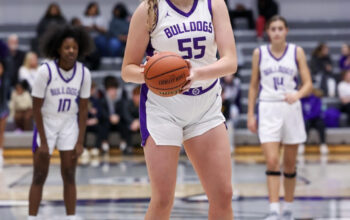
How one Brownsburg family is beating breast cancer together
By Lindsay Doty
When 44-year-old mother of two, Phlona Williams, gets together with the women in her family, it’s all about jammies, comfort food and relaxing.
“We watch movies and play games. Juno, Monopoly, we do Clue–you name it. There is always popcorn and cheesecake,” says Williams, who often hosts her oldest daughter Charane “Rane” Chilton, 28, and her mother, Paula Miller, 66, for a girl’s night at her home in Brownsburg.
The three generations of women have lots in common. From their strong faith and emotional control (they never cry in front of each other) to working in careers where they help others. This year, they found out something else they share: the gene mutation linked to breast cancer.
The discovery began in early 2018 when Williams noticed her left breast felt achy, tender and “not her normal.” A few months later, she decided to go see her doctor and a mammogram detected an abnormality. She was sent to IU Health West for more advanced 3D testing.
“I’m a person who keeps calm until I know I need to freak out,” said Phlona Williams, who remembers that dreaded day in February. She had just left a meeting at her new job at the state health department when she got the call. Her cells had come back cancerous.
“As soon as I heard those words, I think I got quiet and I know some tears came for a moment because cancer sounds like a death sentence when you hear it without any knowledge,” she said.
Williams immediately thought of her 9-year-old daughter, Nia.
“I’m a single mother. I was like, ‘I can’t have cancer, I can’t be dealing with cancer when I’ve got this going on and this person I’m responsible for.’”
The team at the Cancer Center at IU Health West Hospital helped Williams assess her risks and explore her treatment options. She was referred to the hospital’s high-risk program.
“I felt like there was a message of hope there. It was early on, it (the cancer) hadn’t gone into a stage yet, there were options,” she remembers.
Even though she only had cancer in one breast, Williams wanted to have both removed to reduce future problems. To help decide, she underwent genetic testing for the rare mutation that is linked to a higher risk for breast and ovarian cancers. Just before surgery, her results came in. They were positive for the BRCA1 (BReast CAncer gene one) mutation.
According to a report by the National Cancer Institute, an estimated 72 percent of women who inherit the BRCA 1 mutation and 69 percent of women who inherit the BRCA2 mutation will develop breast cancer by the age of 80. By contrast, about 12 percent of women in the general population will develop breast cancer at some time during their lives.
“Knowing the risks, I knew I wanted to go ahead with the surgery I already wanted,” said Williams, whose results encouraged her mother and grown daughter to also get tested.
“It was kind of a mini breaking point for me when I found out that they had the mutation too,” said Williams, who was especially emotional about her oldest daughter Rane, an EMT who had just gotten married and not yet started a family.
Both women discovered they did not have cancer but are high risk. They are now monitored closely where they alternate between mammograms and MRIs every six months. The grandmother/ granddaughter duo accompany each other to appointments for support.
For Williams, removing her cancer was a complicated but successful process. She underwent a bilateral nipple-sparing mastectomy in March using her own tissue from her stomach to reconstruct her breasts. It was done using an advanced Hidden Scar technique.
“The primary goal of treatment is to successfully remove the cancer, but I also prioritize my patients’ cosmetic outcome. Scars matter and studies show that scars from breast cancer surgery can impact a woman’s self-confidence, intimacy and body image,” explained IU Health Breast Surgeon Dr. Samilia Obeng-Gyasi, who performed the operation and does between 10-15 Hidden Scar surgeries a year.
“It was important for me to have breasts because I’m 44 and I didn’t want to go without. I wanted to keep my lady lumps. There you have it!” laughs Williams, who was adamant about using her tissue as opposed to implants.
“I’m just so amazed throughout this process with what can be done. It’s just blown my mind.”
The surgery worked and Williams will not need radiation. She will undergo a revision breast surgery and the removal of her ovaries in the coming months.
“I am cancer-free. I feel absolutely blessed because I know women who have to go through chemo and radiation and I know a lady who I work with who has to take chemo pill every day.”
For her family, it has been an emotional journey and a trove of information, but they feel lucky to have the knowledge and tools to stay ahead of it. Going through this together has only strengthened their bond.
“You never know what you can handle, until you have to handle it, so I guess I have been complimented a lot on how positive I’ve stayed and I think our faith has a lot to do with that. We are strong believers.”
She says the experience has reminded her of life’s important lessons.
“I don’t think I was ever one who took things for granted, but I absolutely don’t take anything for granted now.”


